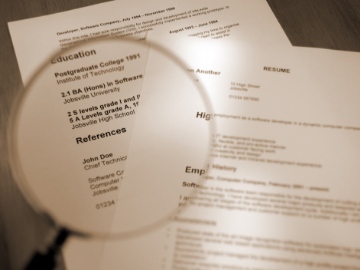ATS-Friendly Resume: How to Optimize Your Resume for ATS

Getting your resume rejected can be frustrating when applying for a new job. However, don't blame the recruiter since it might be the ATS' fault.
An applicant tracking system (ATS) is a computer software program that selects ideal applicants to streamline recruitment. It favors ATS-friendly resumes, which is important to remember when drafting yours.
What is an ATS-Friendly Resume?
Writing and formatting with the system's needs in mind make your resume an ATS-friendly resume. As an applicant, it's your job to determine the system's requirements and adjust your resume to them.
Keep in mind that while recruiters are looking for skills, the ATS searches for keywords. It does this by categorizing resume content to look for relevant phrases. So, making your resume clear and concise is crucial for accurate keyword tracking. You can use resume-scanning tools to check if an ATS will find your resume easy to understand.
How to Optimize Resume for ATS
Optimizing a resume is a matter of tweaking it according to what the system is looking for. Here are some tips that can help you create an attractive ATS-friendly resume that works.
-
Use relevant keywords
As mentioned, an ATS ranks resumes based on the keywords they contain. Run the description through a keyword density tool to help you identify the words you need to use. The tool can give you a list of the most-used keywords in the description. You can then include them in your resume content.
An ATS looks for keywords that are relevant to the job position. For instance, it might search for programming languages if you're applying as a web developer. Moreover, the keywords you need may vary depending on the position you're applying for. So, tailor your resume to each job before sending it out.
-
Use appropriate sections
Sectioning your resume into parts can help you optimize your resume for ATS. Create sections for your content to make reading easier. As a rule of thumb, have areas about your work experience, educational background, and skills.
Stick with standard section naming. Remember this, as the ATS also checks section headings for keywords. For instance, the recruiter might program the ATS to look for "Work Experience" headers for your employment history. The ATS might ignore it if you have something like "Where I've Worked" instead.
-
Avoid graphics and images
The ATS needs to receive text-based content to scan for keywords. It can't parse graphics and images or read charts and tables accurately. Using these elements might cause the ATS to exclude your application from the pool. So, minimize or avoid non-text content to make your resume ATS-friendly.
If you're concerned about design, you may still use different colored fonts. You can also use unique font faces as long as they're legible.
-
Stick to using bullet points
Bullets help the ATS read your resume and make it more concise for both the system and the recruiter. They can also make important information stand out better than sentences and paragraphs. Just be sure to stick with the usual solid round or square bullets. Anything else might mess up your format and confuse the ATS.
-
Choose the right file type and filename
ATS can be pretty sensitive when handling file types. PDF files tend to mess up formatting, which could confuse the system. If the job posting doesn't require a particular file type, using a .docx file is the safest choice.
File naming is another thing you should consider. While it doesn't affect how you optimize your resume for ATS, it can help establish professionalism. Using an organized naming format like Surname-Company Name-Resume is a good naming practice.
Appeal to Real People and Tech Systems
Having an ATS-friendly resume can make you more attractive to the system and recruiters. In turn, it gives you a greater chance of getting accepted for the job.
Although optimizing your resume for ATS is essential, you should also keep the recruiter in mind. While your resume must be easy for a machine to read, it should also appeal to recruiters. After all, their decision could determine whether you're getting the job.
Is your resume ATS-friendly? Apply for a job at Career.com now.


